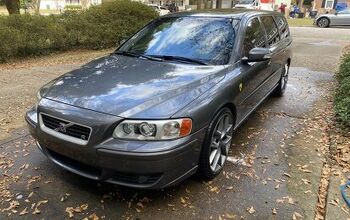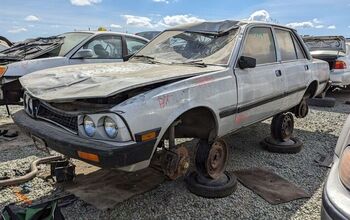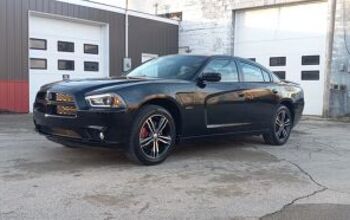Memoirs Of An Independent Repair Shop Owner: I Don't Like Your Tone – Some Thoughts on In-Cabin Audible Warning Devices
Since we were on the subject of electronic and computerized vehicle protection systems, it seemed like a logical move to begin a discussion of another long-standing and not universally beloved vehicle subsystem—this one ostensibly purposed to save us from ourselves, or at least our vehicles from “the nut behind the wheel”.
To say that the technologies employed in this quest have had mixed results, at best, would lean a little toward the generous side.
What started as often a very rudimentary electric buzzer, activated by just a couple of critical conditions related to door and ignition key position, eventually morphed into an exhaustive array of monitored components—each with their very own distinctive tone!
We now have warnings for everything from low tire pressure and vital fluid levels to electrical system malfunction, and most anything one can think of in between. It got so complex, manufacturers finally lumped all of these monitored systems into one centralized display with one tone, and a lighted digital display listing the offending components, circuits or subsystems. With a mighty ding (or dong) you would then be reminded of low windshield washer fluid level, how many miles until an empty fuel tank or until the next recommended oil service, the need to have other routine maintenance performed, or a host of other less-than-life-threatening events in progress every time you started off for a drive.
There were also a lot of interesting—if not obnoxiously implemented—detours and dead-ends along the way, too.
From my perspective as a technician and shop owner, the big crux with these devices has been: How critical they are to the to the actual operation of the vehicle, and how easy they are to be defeated—as in SILENCED.
In the kinder and gentler days of yore, the tacky and equally volumetric warning buzzer could be accessed with ease—sometimes without even removing the lower dash panel—and simply unplugged; with no untoward results to the rest of the vehicle. Disconnecting, or otherwise rendering an interior audible warning device inoperative on a modern vehicle is pretty much the polar opposite.
A friend of mine recently acquired a relatively late-model M/Benz E320, and came to hate the in-cabin warning buzzer (yes, they have come full-circle, apparently, with regard to employed tone) almost immediately. He’s a pretty tolerant guy, so when he described the aggravation he was experiencing with this work of the Devil, I understood why he just had to take an immediate time-out and silence the thing. I’m pretty sure he didn’t know what he was getting into when he started dismantling the dash, piece by piece, until he zeroed in on the exact location of the offending unit. It turned out to be soldered into—as in being a completely integrated component part of—the instrument cluster electronic motherboard! After careful consideration of the ramifications of his next move, he went the B.F.I.
(Brute Force and Ignorance) route and CRUSHED it with a pair of slip-joint pliers!
From my objective standpoint, that sounded like a risky move. What if such an action inhibited some other essential process from being accomplished? It would have been hard to correct the damage done, and another motherboard would have to be sourced—complete with fully operational warning buzzer! Talk about potential for adding insult to injury!
Fortunately, the only effect of his action was the desired one; and several hours later, he was able to experience newfound sanity from behind the wheel.
Not that all attempts at in-cabin warning devices have been equally useless. There have been a few exceptions, in my opinion. The manufacturer often referred to them as a “chime”—a term that actually had some merit.
Who could forget the “tinkle-tinkle” that wafted pleasantly from behind the dash of earlier Subaru models? So pleasant as to be missing a sense of urgency that might have actually been appropriate, it was.
Or how about the key-in door-open three-note melody that earlier VW models came equipped with. It was the first three notes of the English Hunting Call, for heaven’s sake! That seemed like a very positive way to encourage the driver to get in and get on with it.
Then, of course, what I consider the crowning achievement of audible warning-dom: The synthesized vocal warning! A customer of mine referred to the “voice” in his Chrysler K-Car as “Guido”—a sarcastic take on the nickname of the then-President of Chrysler.
I think auto manufacturers really missed a great opportunity by not running a little more with the vocal warning. Yeah, “Guido” was a fairly boring take; but why stop there and say that’s as good as it gets? Why not offer a wide variety of voices and approaches to warning the driver? Want to be reminded to shut the door by a caricature nagging female voice, saturated with attitude? Might even prompt the driver to open the door at odd times just to hear her “go off”! Not your cup of tea? How about a sexy male voice telling you that you’ve forgotten to turn off the headlights? You might find yourself leaving them on purposely just to see if he still cares enough to remind you, yet again—without a hint of impatience!
More by Phil Coconis
Latest Car Reviews
Read moreLatest Product Reviews
Read moreRecent Comments
- Teddyc73 Oh look dull grey with black wheels. How original.
- Teddyc73 "Matte paint looks good on this car." No it doesn't. It doesn't look good on any car. From the Nissan Versa I rented all the up to this monstrosity. This paint trend needs to die before out roads are awash with grey vehicles with black wheels. Why are people such lemmings lacking in individuality? Come on people, embrace color.
- Flashindapan Will I miss the Malibu, no. Will I miss one less midsize sedan that’s comfortable, reliable and reasonably priced, yes.
- Theflyersfan I used to love the 7-series. One of those aspirational luxury cars. And then I parked right next to one of the new ones just over the weekend. And that love went away. Honestly, if this is what the Chinese market thinks is luxury, let them have it. Because, and I'll be reserved here, this is one butt-ugly, mutha f'n, unholy trainwreck of a design. There has to be an excellent car under all of the grotesque and overdone bodywork. What were they thinking? Luxury is a feeling. It's the soft leather seats. It's the solid door thunk. It's groundbreaking engineering (that hopefully holds up.) It's a presence that oozes "I have arrived," not screaming "LOOK AT ME EVERYONE!!!" The latter is the yahoo who just won $1,000,000 off of a scratch-off and blows it on extra chrome and a dozen light bars on a new F150. It isn't six feet of screens, a dozen suspension settings that don't feel right, and no steering feel. It also isn't a design that is going to be so dated looking in five years that no one is going to want to touch it. Didn't BMW learn anything from the Bangle-butt backlash of 2002?
- Theflyersfan Honda, Toyota, Nissan, Hyundai, and Kia still don't seem to have a problem moving sedans off of the lot. I also see more than a few new 3-series, C-classes and A4s as well showing the Germans can sell the expensive ones. Sales might be down compared to 10-15 years ago, but hundreds of thousands of sales in the US alone isn't anything to sneeze at. What we've had is the thinning of the herd. The crap sedans have exited stage left. And GM has let the Malibu sit and rot on the vine for so long that this was bound to happen. And it bears repeating - auto trends go in cycles. Many times the cars purchased by the next generation aren't the ones their parents and grandparents bought. Who's to say that in 10 years, CUVs are going to be seen at that generation's minivans and no one wants to touch them? The Japanese and Koreans will welcome those buyers back to their full lineups while GM, Ford, and whatever remains of what was Chrysler/Dodge will be back in front of Congress pleading poverty.

































Comments
Join the conversation
All of this dialog tends to prove the worth of vehicles like my '97 Suzuki TL 1000 S/R: 150 HP, 400 lbs., equally formidable brakes; and the only on-board computer is for limited engine management function (F.I. and Ignition). All other computerized functions, such as ABS, Traction Control, Stability System--and yes, even audible warnings--are a function of the processor housed between my ears. That's probably as close to road-going Vehicular Freedom as one can get these days!
Several observations: 1. My vote for worst buzzer has to be the ones in late-'70s to early-'80s GMs--those things could wake the dead!!!! (Close second is the noises made by the starter relays in most late-'60s to early-'70s cars--of all makes--with the first steering column-mounted ignitions--those things scared the living sh-- out of me as a youngster, to the point where I dreaded seatbelt and ignition buzzers of ANY type until into my teens!) In the early '80s, GM put a steady tone in the place of that obnoxious buzzer (1983 Buicks, like my Mom's Regal Sedan, but could have been earler--I may have read that '81 Grand Prixs were so-equipped). On smaller GMs, like my second car, a 1984 Pontiac Sunbird, there was one buzzer for seatbelt and key (unlike the bigger cars I mentioned above before they got the tones, and which had a separate, softer buzzer for the belts--you could hear both buzzers at once with the driver's door open at startup), and it was much less ear-shattering and nerve-rattling. 2. The Tempo/Topaz "bong-bong" chime has a weird "elegance" about it--not really obnoxious. The warning tones in today's Fords are an absolute abomination, especially that wussy three-note tone for the key warning! Just my $0.02--no flame wars, please! 3. Honda stepped up their game with the new Accord, but one of the little "unique" Honda touches was the little five-beep key tone, which Honda has removed in the recent redesigns, at least of the Accord and Civic. The new tones for the key and seatbelt aren't '71 Olds-bad (the starter-relay-generated noise I mentioned, called a sound "like a hillside full of nauseous goats" by legendary car-tester Tom McCahill (sp?)), or even '78-Olds bad (the loud, wake-the-dead key buzzer), but they don't have the "Honda-ness!" As for the "Belt Minder" in the Hondas, you have the normal light and beeper at startup, but if you let the car sit at idle w/o buckling up (unlike in Fords), you don't get the "Minder" warning, and the warning only activates over a certain speed, so you can move the car slowly if needed; stopping the car seems to reset the "timer"--I've moved my car from one end of a mall parking lot to the other w/o buckling up or having the Minder activate by doing this. However, unlike the Fords (which have a "twist-the-key-while-facing-east-and-standing-on-your-head" procedure," or maybe through some sort of Setup menu), the Honda Belt Minder CAN'T be totally disabled.